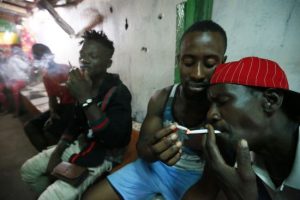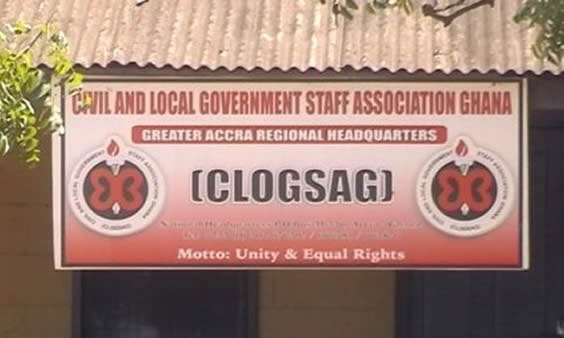
By Fiifi NETTEY
In recent times, the name ‘Red’ has become a household term across Ghana. The name now evokes concern, fear and heartbreak, especially in urban ghettos. What once might have sounded harmless has now become synonymous with a dangerous synthetic drug named ‘Red’ that is slowly but steadily consuming the lives and potential of many young Ghanaians

What is ‘Red’
According to the U.S. National Library of Medicine’s MedlinePlus, ‘Red’ is a potent synthetic opioid made from a combination of tapentadol and carisoprodol, originally developed for pain management.
Intended strictly for medical use. These substances are now being sold illegally under street names such as Tafrodol or Super Royal-225. What was once administered in controlled medical settings to treat severe pain has now found its way onto the streets being abused like cocaine or cannabis; and yet far more discreet and insidious in its effects.
The U.S. National Library of Medicine defines tapentadol as a prescription opioid painkiller used to treat moderate to severe acute pain by altering how the brain perceives it. The U.S. Food and Drug Administration (FDA) also defines carisoprodol as a muscle relaxant used for treating discomfort from muscle injuries, acting on the nervous system to block pain signals
Locally, the Food and Drugs Authority (FDA) in Ghana has warned that the misuse of unapproved and unregulated drug mixtures commonly referred to on the streets as ‘Red’ poses a serious public health threat. The named substances, often infused with opioids or sedatives, are reportedly abused for their euphoric and calming effects, particularly among urban youth and low-income workers (FDA Ghana Public Alert, 2025).
A pharmacist I spoke with revealed that ‘Red’ contains tramadol-like compounds and is an even more potent and dangerous mixture—frequently circulating without any authorisation for medical use.
My personal encounter with the effects of ‘Red’ was both alarming and eye-opening. I came across a young man standing by the roadside, half-asleep, while still on his feet. He appeared drowsy, intoxicated and struggled to maintain his balance. His vulnerability was striking. He looked almost lifeless, and I feared he might collapse at any moment and seriously harm himself. Curious and concerned, I asked a few passers-by what might be wrong. One of the street boys calmly responded, “Oh, he has taken ‘Red’. He will be fine soon.” That answer stayed with me.
Later, another young man who – did not share his name- gave me some insight. “This ‘Red’ that everybody is talking about has been in the system for years. It’s just a name change,” he began. According to him, what is now called ‘Red’ used to be known simply as 225. It was, and still is, widely used by labourers, trotro drivers, Okada riders, street hawkers, sex workers and others in physically demanding jobs to suppress tiredness and maintain stamina. “It helps us keep working. You only feel the exhaustion after,” he said.
But its use goes beyond just work. Some take it for enhanced sexual performance. Others take it to escape anxiety, depression or just to “feel high.” For many, ‘Red’ is a coping mechanism in a harsh economic reality in the ghettos. He also explained how users try to enhance the effects of the drug by mixing it with energy drinks, cough mixture, milk, alcohol or sometimes smoking it alongside cannabis. “It makes you feel fine,” he said, “but if you are not careful, you will find yourself hooked before you even realise it.”
He shared a personal example, explaining that the drug can overstimulate you to the point where you might suddenly fall asleep while standing, completely unaware. “The feeling is so intense and uncontrollable. It’s as if your body no longer belongs to you.”
Francis, a shoemaker who admits to using the drug ‘Red’ says it helps him cope with the physical demands of his work. He spends long hours under the scorching sun, walking from Circle through Kaneshie Market, further to Odorkor, and eventually to Kwashiman before returning to Circle – all in search of customers. “After I take ‘Red’, I get the energy to move around the whole day,” he explained. “I’m careful with it, but man must survive and hustle.”
He was quick to stress that he does not use the drug for recreation. “It’s for work, not for fun. So I’m fine,” he said. When I cautioned him about its potential side effects and dangers, he merely nodded and replied: “Man must hustle to survive the harsh conditions of Accra.”
Patrick, another hustler, admits that his life has taken a downturn due to drug use. “’Red’ is small for me,” he told me, implying that it is mild compared to the harder substances he once used.
However, he said he now relied on ‘Red’ because he can no longer afford more expensive drugs. “It gives me a different kind of feeling,” he added, pausing, “one that is hard to describe.” I spoke to a labourer who shared his experience with taking ‘Red’. “I have heard a lot of things about ‘Red’—good and bad. But for me, I believe what I see. The truth is, it helps me with the kind of hard work I do. I’m able to work long hours without feeling any pain afterward. I don’t abuse it; I only use it when I have heavy work to do.”
One thing I observed while speaking with the addicts is that they seemed addicted to the drug without realising it. They use it daily and all appeared unwell, disconnected from reality and in a very unkempt state.
The FDA has not approved ‘Red’ for medical use. The substance is unregulated and unauthorised, making its distribution and consumption illegal. The FDA is urging the public to report anyone involved in the sale or use of this illicit drug.
In March 2025, the FDA Ghana, in partnership with the Ministry of Youth Development and Empowerment, launched a nationwide anti-drug campaign dubbed ‘Ghana Against Drugs’ (GAD) – Red Means Stop. The campaign targets young people through education, community outreach, rehabilitation efforts and public awareness about the dangers of opioid abuse.
A psychiatrist, who spoke on condition of anonymity, warned that the drug can trigger heart attacks, strokes and psychosis, often leading to severe mental health problems. It also causes kidney damage and, in some cases, cirrhosis of the liver. He revealed that many of his patients were teenagers who had been addicted to the drug for some time.
When asked how they first came into contact with it, he noted that many admitted it was introduced to them by a friend in the ghetto. He stressed that urgent intervention was needed to curb the growing epidemic, warning that it was far more serious than it appeared.
The Narcotics Control Commission has also launched a heavy clampdown on pharmaceutical shops involved in the sale of the illicit drug known as ‘Red’. This operation has led to the arrest of several sellers over the past few months. Authorities say the fight against such illegal drugs has been intensified to get rid of the drugs from the system.
The most troubling aspect is that a dangerous drug is being abused by the youth, and its use appears to have become normalised in some communities. Kwame told me that some drinking bars sell the drug secretly to only people they trust. As a result, the drug has become very common in the ghettos.
In a conversation with Mike, who lives near a popular spot around Circle, he stressed that the abuse of ‘Red’ is far more serious than many realise. According to him, young men and women are being destroyed by the drug, and the alarming part is that they are almost always high on it.
He described them as constantly looking intoxicated, unkempt, unhealthy and frail, warning that something urgent must be done to address the situation.
The easy access to the drug through illegal means through some agents and the low cost as well as perceived benefits have made it popular among the youth, especially those in low-income neighbourhoods. But, the long-term effects include addiction, mental health issues, physical deterioration and, in some cases, death.
Hawkers are openly parading the streets with medications—particularly sexual performance drugs—packed in plain rubber bags, selling them on buses and along the roads. Although this practice is illegal, it continues unchecked and is patronised by the public.
The question is: how are these drugs being sold so freely without authorisation, and why are so many low-income earners drawn to them? More importantly, how can we be certain that what they are selling is truly what they claim and not something else entirely—possibly even ‘Red’?
This illegal drug sale is at crisis point that calls for urgent intervention— from civil society groups, health professionals and community leaders. There is a need for awareness campaigns, affordable treatment, rehabilitation centre, and economic opportunities for youth. All these must be prioritised to counter the grip of this silent epidemic.
>>>the writer is a media consultant
The post ‘Red’ is Ghetto and Ghetto is ‘Red’! appeared first on The Business & Financial Times.
Read Full Story























Facebook
Twitter
Pinterest
Instagram
Google+
YouTube
LinkedIn
RSS